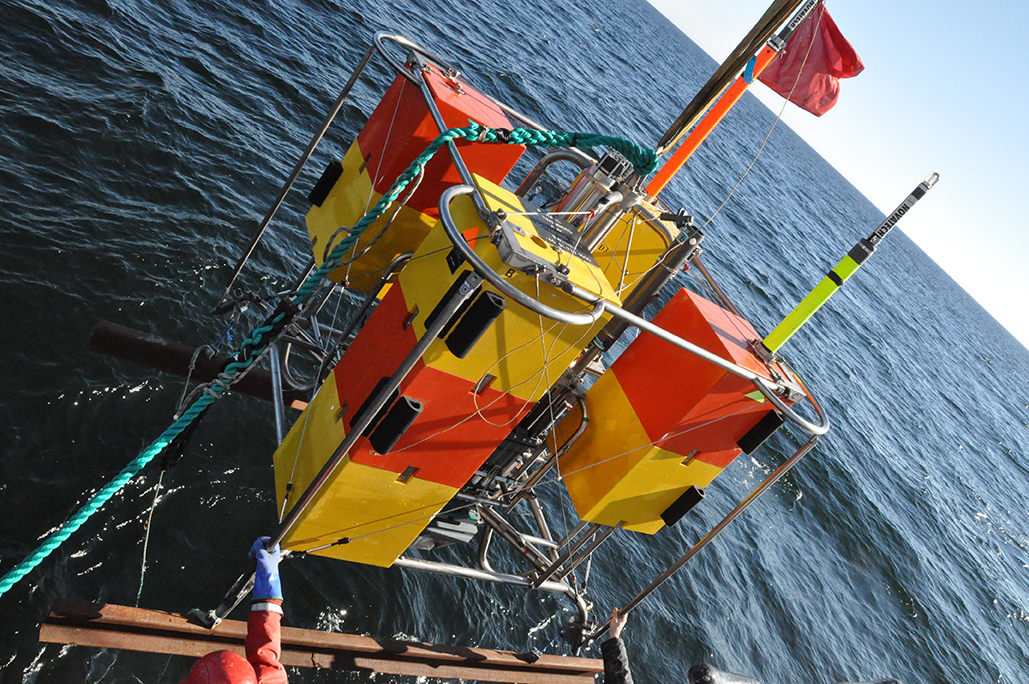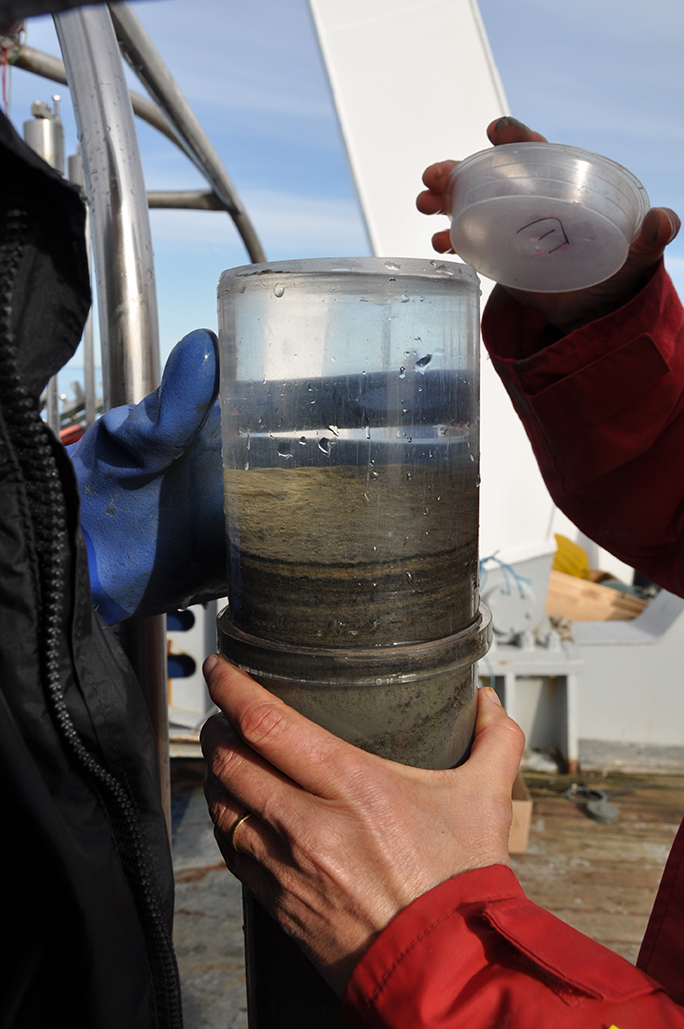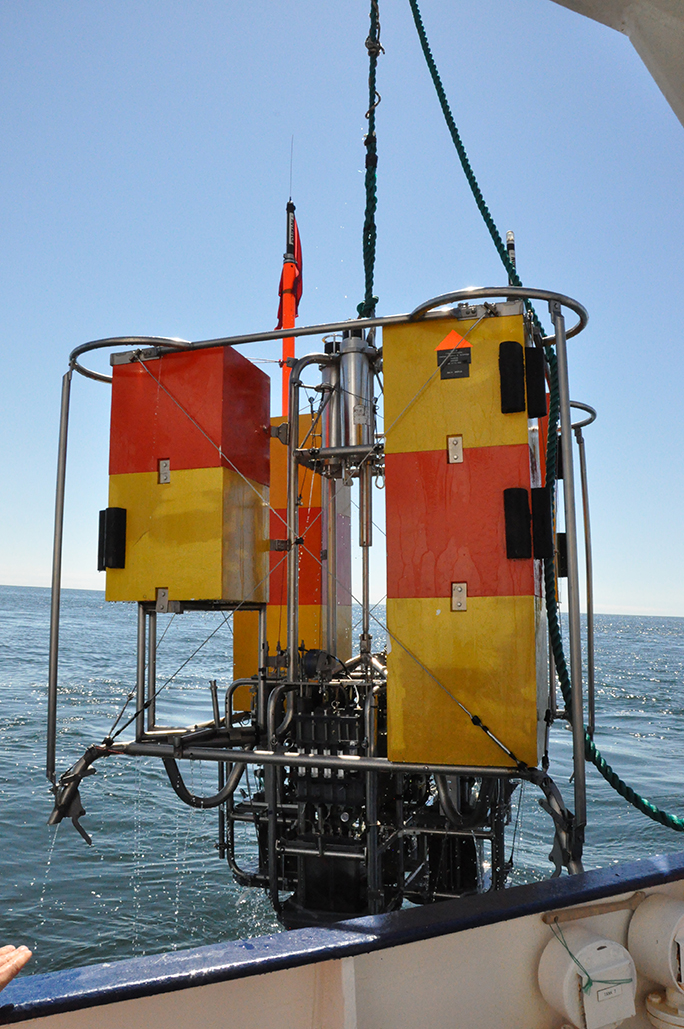
The sediments of the Baltic Sea are burying far less organic carbon than researchers previously believed. This is shown by new studies from the University of Gothenburg. Thanks to this fresh knowledge, forecasts of the Baltic Sea’s ability to take up carbon dioxide may need to be revised.
Large quantities of organic carbon are deposited in the sediments of shallow marine areas such as the Baltic Sea. This carbon can be broken down by microorganisms and sediment-living animals to then leak out (in an inorganic form) into the water. Alternatively, it may be held for long periods.
 Sediment is important as a “store” for organic carbon and, consequently, for taking care of some of the atmosphere’s carbon dioxide. However, besides storing carbon, sediments also degrade organic carbon into dissolved inorganic carbon. This latter then recirculates into the sea’s water.
Sediment is important as a “store” for organic carbon and, consequently, for taking care of some of the atmosphere’s carbon dioxide. However, besides storing carbon, sediments also degrade organic carbon into dissolved inorganic carbon. This latter then recirculates into the sea’s water.
“We have found that 96 per cent of the organic carbon entering the sediments is broken down and leaks out,” says the University of Gothenburg’s Madeleine Nilsson, author of a new doctoral thesis (which includes the studies).
This means that the sediments of the Baltic Sea are leaking three times more carbon than researchers previously thought.
“We had expected a burying efficiency higher than just four per cent. It is noteworthy that, despite the high input, the sediments can recirculate such a large ratio of the organic carbon.”
In effect, the Baltic Sea is leaking three times more inorganic carbon into its waters than is being added via its tributaries. This shows that the sediments are of major importance in the  Baltic Sea’s carbon cycle.
Baltic Sea’s carbon cycle.
Unlike in previous studies, the fieldwork here used so-called “benthic landers”. These can carry out measurements in sediments in their natural sea-bed environments. Thus, they have minimum impact on the natural biogeochemical processes that take place in the sediments.
“Working with benthic landers is technically demanding. However, in return, we get very high quality measurements of the sediment processes. Without such technology, it is easy to end up with incomplete pictures.”
The Baltic Sea is strongly affected by high input of nutrients (eutrophication) from the surrounding land areas. Plankton grows rapidly and, as a result, organic material is formed.
“Greater attention needs to be paid to the role of sediment in the Baltic Sea’s carbon cycle. Above all else, it is important to take into account the previously very much underestimated recirculation of dissolved inorganic carbon.”
 The newly gained knowledge may mean that forecasts of the Baltic Sea’s ability to take up carbon dioxide may have to be changed. Similarly the role of the Baltic Sea’s sediments in carbon cycling may require greater attention and new ways of including them in models may have to be found.
The newly gained knowledge may mean that forecasts of the Baltic Sea’s ability to take up carbon dioxide may have to be changed. Similarly the role of the Baltic Sea’s sediments in carbon cycling may require greater attention and new ways of including them in models may have to be found.
Thesis title: Carbon Cycling in Baltic Sea Sediments – In Situ Investigations with Benthic Landers
Link to the thesis: http://hdl.handle.net/2077/56260.
Supervisor: Per Hall.
Contacts:
Madeleine Nilsson, Department of Marine Sciences, the University of Gothenburg: madeleine.nilsson@marine.gu.se; +46 (0)31 786 90 56; +46 (0)73 532 7551.
Photos: Astrid Hylén.